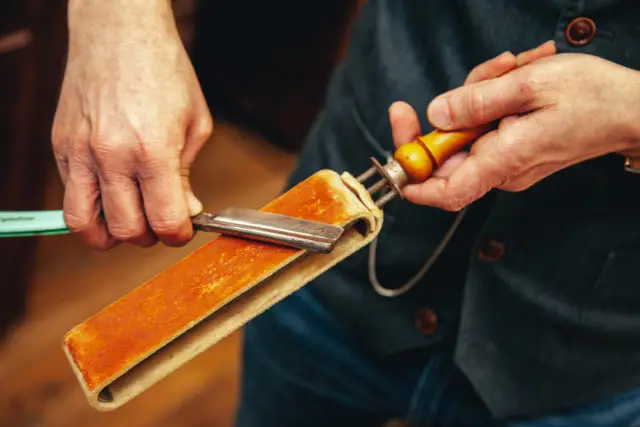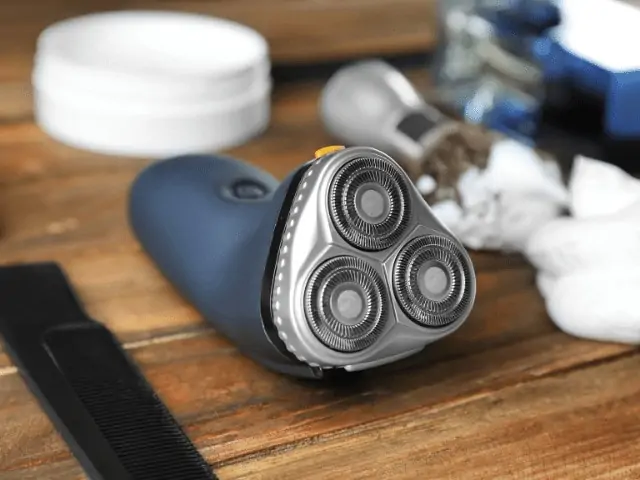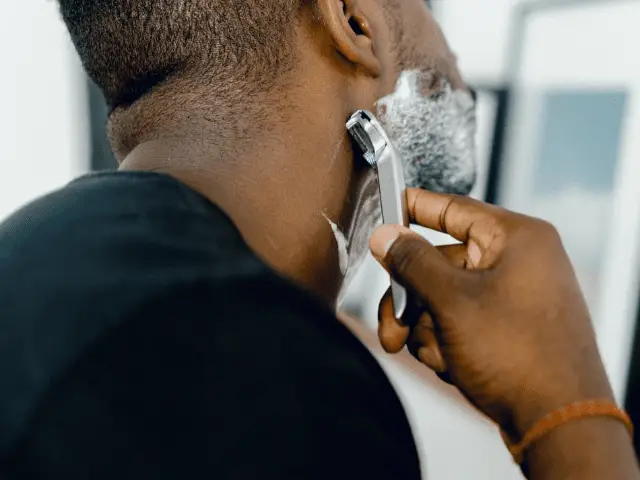Are you tired of getting lackluster shaves and feeling like your razor is duller than your dad jokes?
Well, fear not! In this guide, I'll walk you through the art of sharpening razor blades to help you achieve that effortlessly precise and smooth shave you've been dreaming of.
Get ready to unleash the true potential of your safety razor...
Page Contents
How to Sharpen Razor Blades Step-by-Step
Sharp shaving blades are essential for a better shave. Dull blades can cause irritation, cuts, and ingrown hairs. Knowing how to properly sharpen a dull blade is important to maintain its sharpness.
There are different types of blades available in the market such as safety razors, double-edge razor blades, and disposable razors with disposable blades. Each type requires a specific technique for sharpening.

Sharpening disposable razors is not recommended by manufacturers but some people have found success using DIY techniques such as rubbing the blade against denim from an old pair of jeans or applying baby oil, mineral oil, or natural oils on the blade before shaving.
However, it's important to note that these methods may save money but will not work for everyone and could potentially damage the blade further if done incorrectly.
So let's go over 3 proven methods to get your straight razor sharp again:
Method 1: Using a Sharpening Stone
There's something undeniably satisfying about wielding a sharpening stone like a shaving sensei. Trust me; I've been there, honing my skills (and my safety razor blades) for years.
Here's how you can sharpen disposable razors this way:
- Preparing the sharpening stone: Before we dive into the sharpening process, it's crucial to ensure your sharpening stone is clean and ready for action. Give it a quick rinse and pat it dry or use a hair dryer, to remove any debris or residue.
- Holding the blade at the correct angle: Imagine you're holding a delicate butterfly in your hands—gently grasp the razor blade and position it at a 30-degree angle against the sharpening stone. Remember, precision is key!
- Applying the proper sharpening technique: With a steady hand, move the dull blade across the stone in controlled quick strokes. Start from the heel and move towards the tip, maintaining consistent pressure throughout. Repeat this motion on both sides of the blade for an even sharpening.
- Testing the sharpness of the blade: Now comes the moment of truth. Carefully run your thumb across the blade (not too hard, unless you're feeling particularly daring). If it glides smoothly without catching, congrats! You've sharpened your disposable razors like a pro.
Method 2: Using Honing Strop
Ah, the classic honing strop—a trusty companion in the quest for a keen edge. Way more convenient than an old pair of jeans.
Let me guide you through the steps:
- Preparing the honing strop: Before getting down to business, make sure your honing strop is clean and properly tensioned. You want it to be taut but not overly tight. A well-prepared leather strop is the foundation of a perfect shave.
- Stropping the razor blade: Hold the traditional strop firmly and lay it flat on a stable surface or your bathroom sink. With the spine of the razor blade resting on the strop, move it away from you, using long, sweeping strokes. Repeat this process several times, alternating between sides.
- Checking for sharpness: Time to put your detective skills to the test. Observe the blade's edge under a good light source. If it gleams like a star in the night sky, you're on the right track. Remember, a sharp blade reflects your dedication and attention to detail.
Method 3: Using a Razor Blade Sharpening Kit
For those who prefer a more modern approach, disposable razor sharpening kits can be a game-changer.
Here's how to make the most of it:
- Overview of different types of sharpening kits: There are various cartridge razor sharpening kits available, each with its unique features. Take a moment to familiarize yourself with the kit you've chosen and read the instructions thoroughly.
- Following the instructions provided with the kit: Trust me, guys, I've learned the hard way that skipping instructions is like skipping leg day—it never ends well. So, take your time to understand the manufacturer's guidelines and follow them diligently.
- Verifying the sharpness of the blade: Once you've completed the sharpening process as instructed, it's time to put your newly sharpened blade to the test. Grab a piece of paper or try a gentle swipe across your arm (careful now, we don't want any unnecessary battle scars). If the razor effortlessly slices through with precision, congratulations! You've successfully sharpened your disposable razors using a kit.
Additional Tips for Razor Blade Maintenance
Proper Storage of Razor Blades
After each shave, give your new razor a quick rinse to remove any lingering debris or shaving cream. Use rubbing alcohol and warm water for a thorough cleaning. Store it in a dry place, away from moisture, to prevent premature dulling.

Cleaning and Drying After Use
Don't forget to clean your razor after each use thoroughly. An old toothbrush or soft brush can work wonders to remove any buildup between the blades.
Once clean, make sure to dry it properly with a microfiber cloth before storage to prevent rusting.
Regular Honing and Stropping for Maintenance
Sharpening your shaving blades is not a one-time affair. Regular honing and stropping can help maintain their sharpness for a longer period.
Consider incorporating these maintenance steps into your shaving routine to keep those blades in top-notch condition.
Knowing When to Replace a Dull Razor
As much as we'd love to believe in eternal sharpness, there comes a time when even the best-sharpened blades need retirement.

Pay attention to signs of excessive dullness, nicks, or blades that tug rather than glide. When in doubt, it's better to replace them and start afresh.
Troubleshooting Common Issues
Uneven Sharpening
If you notice that your blade is sharpened unevenly, take a step back, breathe, and give it another shot. Remember to maintain consistent pressure and angle while sharpening. Practice makes perfect, my friends.
Damaged or Worn-Out Blades
Sometimes, no matter how skilled we are at sharpening, certain dull blades may be beyond repair. If you spot deep nicks, cracks, or excessive wear, it's time to bid farewell and welcome a new blade into your shaving routine.
Nicks and Chips on the Blade
Minor nicks and chips can happen, especially if you're a bit rough around the edges. Fear not, my fellow grooming enthusiasts! A slight touch-up with a sharpening stone or strop can often smooth out those imperfections and restore the blade's performance.
Summary
Congratulations, gents! You've now embarked on a journey to master the art of sharpening dull razor blades. By following our step-by-step guide and incorporating proper maintenance practices, you'll unlock a whole new level of shaving precision and comfort.
Remember, whether you choose the traditional sharpening stone, the classic honing strop, or convenient straight razors, the key lies in patience, technique, and regular maintenance.
So, keep those blades sharp, your shaving game on point, and embrace the joy of an irritation-free shave.
Frequently Asked Questions
What is the best way to sharpen razors?
The best way to sharpen razors is subjective and depends on personal preference. Methods like using a sharpening stone, honing strop, or a razor sharpening kit are commonly used.
How do I keep my razor blades sharp?
To keep razor blades sharp, rinse them thoroughly after use, dry them properly, and consider regular honing and stropping. Additionally, store them in a dry place to prevent moisture-induced dullness.
How often should razor blades be sharpened?
The frequency of sharpening a razor completely depends on usage and personal preference. As a general guideline, sharpening them every few weeks or when you notice a decrease in performance can help maintain their sharpness.
Can disposable razor blades be sharpened?
Disposable razor blades are typically designed for single use and are not intended for sharpening. It's more cost-effective to replace disposable blades when they become dull.
What do barbers use to sharpen their razors?
Barbers often use a combination of sharpening stones and honing strops to maintain the sharpness of their razors. They follow a meticulous process to ensure precise sharpening for professional shaving with their trusted safety razor, straight razor, and electric razor tools.



